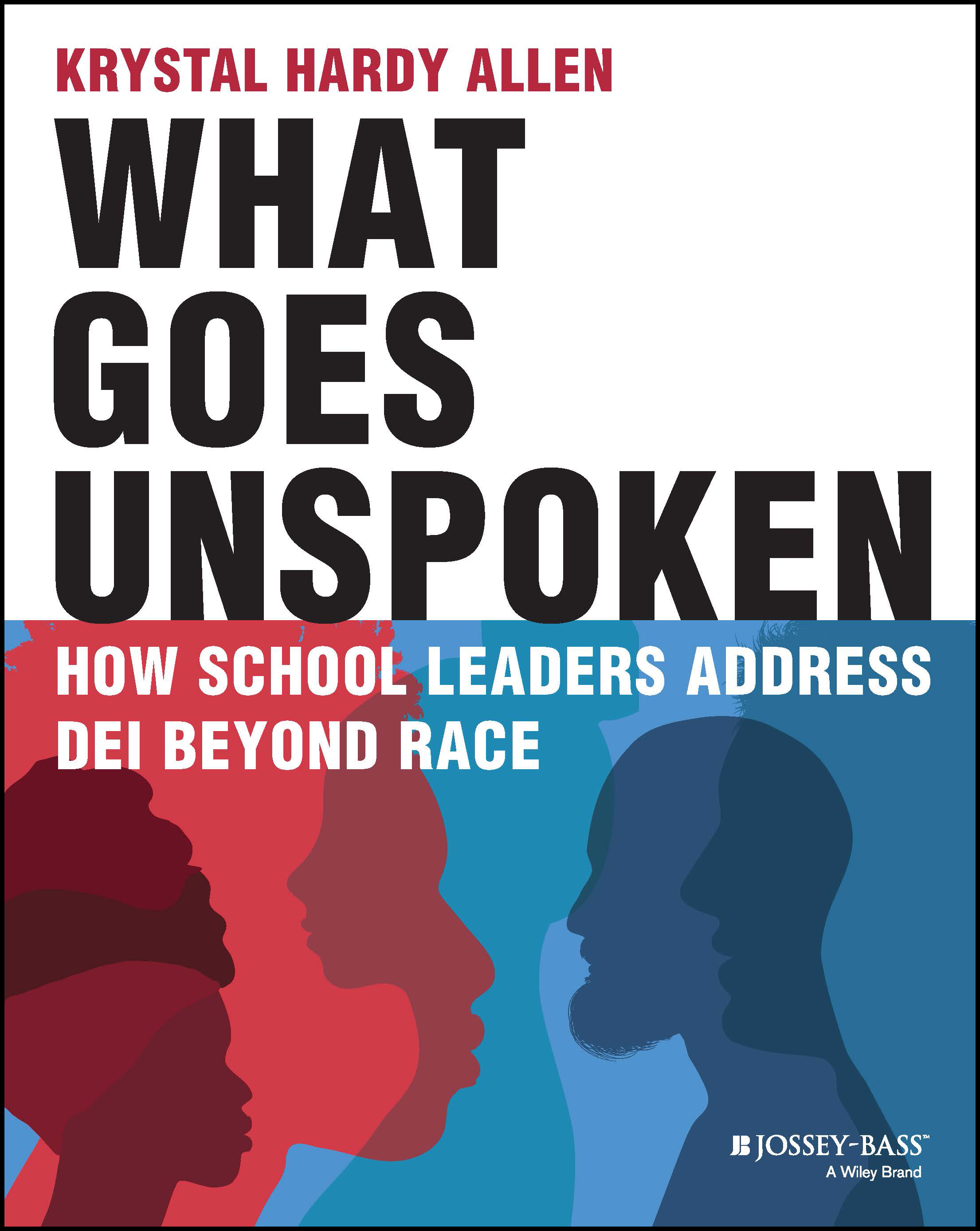What Goes Unspoken: How School Leaders Address DEI Beyond Race provides a guide for centering DEI practices and policies, as well as the interpersonal work required to advance these principles, even in the face of efforts to weaponize DEI as divisive, controversial, and problematic, says reviewer Carrisa Johnson-Scott.
July 14, 2025
 PHOTO COURTESY OF JOSSEY-BASS
PHOTO COURTESY OF JOSSEY-BASS
What Goes Unspoken: How School Leaders Address DEI Beyond Race (Jossey-Bass) provides educators committed to diversity, equity, and inclusion (DEI) with a road map to reflect and implement these principles systematically and sustainably. Education consultant Krystal Hardy Allen, an award-winning former teacher and school principal, introduces the topic by drawing on her own experiences to create a stage for understanding the need for a DEI framework.
She provides a guide in three parts: Getting Started, Operationalizing, and Looking Forward. The book curates 13 chapters of research-based practices, case studies, and questions to guide implementation. Allen leads with the importance of establishing a common language and shared vision. Also included are key points, reflective questions, and a recap to ensure a concrete unpacking of terminology: Diversity refers to unique groups; equity is access, differentiation, and outcomes; and inclusion is the quality of experiences.
The author dedicates Chapter 2 to reflecting on one’s views of DEI. This is the most critical chapter because these principles cannot be fully implemented without self-reflection. “Change begins with recognizing and admitting how you’ve been conditioned to see, think about, and even engage with varying groups of people,” Allen writes. She creates a blueprint to navigate and operationalize or implement DEI within an individual school or school district. Chapter 3 emphasizes the importance of the organization having a clear vision to guide constituents with a commitment to understanding desired outcomes. Case studies are provided to increase the probability of shifting from theory to implementation.
After conceptualizing the theory of DEI, exploring mindsets and personal biases, and shifting to operation, Allen unpacks the components that leaders need to implement the work. This is essential as even though a common language has been defined for DEI, some organizations weaponize these principles as divisive, controversial, and problematic. Therefore, presenting a clear vision and outlining commitments is essential in the rollout of these initiatives.
In Chapters 4-11, Allen discusses stakeholders who must be engaged for the highest leverage strategies to be implemented effectively. Leading the work from a top-down approach is recommended, with buy-in from school boards, upper management, human resources, teachers and students, operations and finance, family and community engagement, and marketing branding and communications.
Part three of the text focuses on looking ahead. Recognizing that this is a hefty initiative, Allen contends that even a well-laid plan needs support. The book provides resources for staying the course and outlines tools that are most leveraged to bridge the gap effectively between all stakeholders. This includes monitoring and measuring the effectiveness of DEI work in the spirit of accountability.
What Goes Unspoken can serve as a workbook and teaching tool to reference, effectively plan, and implement a DEI framework. Considering the various entry levels, the book provides a substantial amount of resources, valuable regardless of prior knowledge and personal biases. Although it offers an essential blueprint, Allen writes that “no amount of money, effort, training, or initiatives will change a leader or organization that refuses to do the work.”
Carrisa Johnson-Scott (carrijoh@charlotte.edu) is a doctoral student at The University of North Carolina at Charlotte.